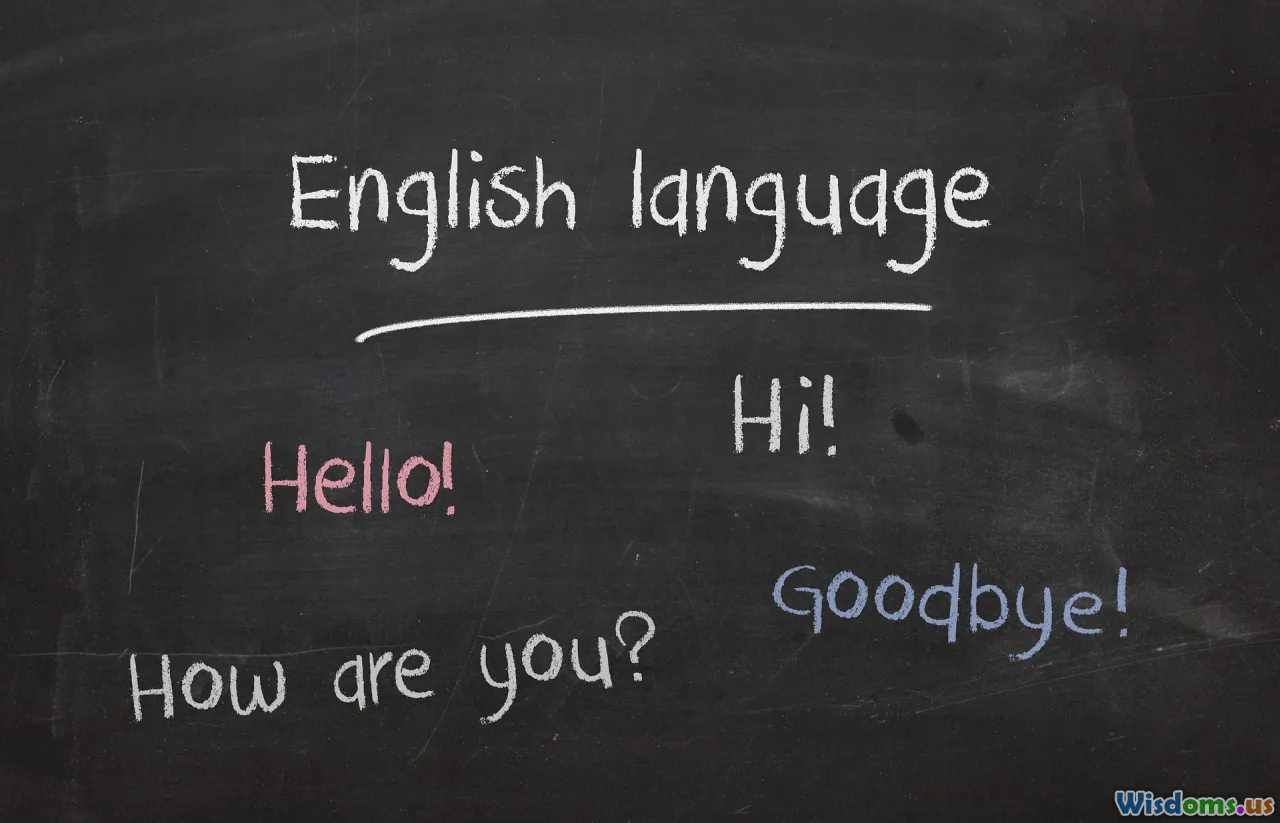
Which Grammar Teaching Method Works Best for Beginners
16 min read Explore effective grammar teaching methods for beginners, comparing popular approaches and offering actionable classroom tips. (0 Reviews)
Which Grammar Teaching Method Works Best for Beginners?
Starting a new language journey is both thrilling and daunting. One of the biggest early hurdles is learning grammar: those invisible rules that make sentences flow and meaning clear. There’s no shortage of teaching methods for beginner grammar—but which truly paves the smoothest path to mastery? Let’s explore proven approaches, real-world examples, and actionable advice tailored to absolute beginners seeking grammar confidence.
The Grammar Teaching Spectrum: From Explicit to Implicit

Before picking the “best” method, it's key to understand the two main axes of grammar teaching. On one end is explicit instruction—think of clear grammar rules, charts, and drills. On the other is implicit learning, where students pick up grammar through exposure, context, and meaningful communication.
Explicit Grammar Teaching:
- Focuses on teaching grammar rules directly, often out of context.
- Common forms include explanation, written exercises, and grammar translation.
- Example: The teacher introduces the present simple verb form: I play, you play, he plays, and students repeat and fill in gaps on worksheets.
Implicit Grammar Teaching:
- Immerses students in language with the aim that grammar is acquired naturally.
- Encourages understanding via stories, conversation, or meaningful tasks.
- Example: The teacher tells a simple story repeating “I go to the park,” “She goes to the shop,” letting students deduce the pattern through exposure.
Hybrid Approaches:
Many effective classrooms combine methods, finding a balance between communicating meaning and drawing attention to structure.
Communicative Language Teaching (CLT): The Interactive Pathway

One of the most widely recommended approaches for beginners, especially since the 1980s, is Communicative Language Teaching (CLT). This method centers communication, prompting students to use grammar as a tool—not just as abstract rules.
Why CLT Works for Beginners
- Motivation Boost: Activities centered on real communication (“What’s your name?”, “Do you like coffee?”) show grammar’s usefulness right away.
- Practical Focus: Instruction is grounded in what students need to say and understand early on, leading to immediate, relevant practice.
- Error Tolerance: Learners aren’t penalized for every mistake, which creates a safer, more supportive atmosphere.
Example Activity: A teacher sets up a role-play where students order food. Rather than drilling verb tables out of context, the class learns and immediately uses grammatical chunks: “I’d like...” or “Can I have...?” Mistakes are gently corrected as needed.
Classroom Result: Research by Spada & Lightbown (2008) finds that students in CLT environments tend to retain and use grammar more accurately in speech, as opposed to rote-memorizing forms they seldom use.
Task-Based Language Teaching (TBLT): Learning by Doing

Task-Based Language Teaching (TBLT) embraces meaningful tasks as the heart of the lesson. Grammar is woven into the process rather than taught before or after communication occurs.
How TBLT Supports Beginners
- Contextual Use: Students pick up grammar while completing tasks—“Find someone in the class who has a pet,” thus practicing questioning forms.
- Engaging Challenges: Tasks are often game-like or relevant, sustaining attention and motivation.
- Organic Grammar Discovery: If students find a grammar gap (“How do I ask about someone’s weekend?”), the teacher can provide a brief, focused explanation—termed Focus on Form.
Example TBLT in Action:
- The class is assigned a survey (“Ask your classmates about their hobbies”).
- Each interaction practices questions: “Do you play tennis?” “Yes, I do.”
- The teacher circulates, providing formulaic phrases or gentle corrections as needed.
A 2022 study by Robinson & Gilabert found that beginners exposed to task-based learning demonstrate higher long-term accuracy in using basic grammar structures compared to traditional drilling.
The Grammar-Translation Method: A Traditional Route

Most adult learners will recognize Grammar-Translation from school days. This method centers on grammar rules, memorization, and translation exercises from the target language to the native tongue (and vice versa).
When Grammar-Translation Can Help
- For learners who are analytical or skeptical without explanations, this method can provide clarity and a sense of structure.
- Useful for those preparing for written exams or who appreciate seeing word-for-word equivalency.
Drawbacks for Beginners:
- Lacks Context: Sentences are often artificial (“The boy eats the apple”), making it hard to see relevance.
- Speaking Neglected: Because practice is written, learners can become accurate on paper but struggle orally.
- Demotivation: Beginners can feel overwhelmed by terminology and rules before they feel able to use the language.
While countless students have started with this approach, current research (National Research Council, 2012) suggests that long-term speaking proficiency emerges more from context-rich, communicative methods.
The Direct Method: Speaking First, Explaining Later

The Direct Method throws learners into active use, prioritizing speaking, listening, and inductive (not rule-based) learning.
Key Features
- No Translation: Grammar is not explained in detail; instead, students mimic phrases and infer rules from context.
- Target Language Only: The class is conducted only in the target language, fostering immersion.
- Question and Answer: Teacher asks questions; students answer, learning patterns by repetition.
Example: Teacher: “Where is the book?” (pointing to the item). Learner: “On the table.” Repeated with variations—“Where is the pen?”—helping grammar and vocabulary entrenchment.
The Direct Method’s immersion taps into the way children acquire their first language. However, some adults may find the lack of explicit rules confusing early on.
Focused Grammar Instruction: The Case for "Focus on Form"

Modern classrooms often blend communicative and explicit grammar instruction under the strategy of Focus on Form. Here, a teacher draws brief, targeted attention to a structure the moment it’s most relevant.
Example of Focus on Form
During a conversation task, a student consistently says, “He go to school every day.” The teacher pauses and, with the group’s input, quickly demonstrates the correct form: “He goes.” The conversation promptly continues, integrating the correction.
Research Insight: A now-classic study by Long (1991) showed that such tailored, "just-in-time" corrections speed up acquisition, as they meet an immediate learner need. For beginners, explicit yet minimal interventions avoid anxiety without leaving errors to fossilize.
Technology in Beginner Grammar Teaching: Blended Approaches

In the 21st century, digital platforms support every conceivable style of grammar teaching.
Examples of Tech-Assisted Approaches for Beginners
- Gamified Apps (e.g., Duolingo, Babbel):
- Provide a constant stream of short, spaced grammar exercises.
- Beginner-friendly hints, immediate feedback, and no-pressure learning.
- Example: A Duolingo session on present continuous introduces “I am eating,” with instant correction and visual cues.
- Interactive Videos (e.g., YouTube Stories):
- Teachers or native speakers model grammar naturally within stories or dialogues.
- Learners pause, repeat, and answer questions—absorbing grammar through context.
- Virtual Classrooms:
- Real-time interaction with teachers (sometimes combining CLT and Focus on Form) allows immediate grammar feedback in conversation.
Key Insight: Research by EdSurge (2022) found that starting language learners who regularly use grammar-focused technology alongside real classes outperform those who use only one method.
Common Struggles and Solutions for Beginners

No matter the method, beginner students confront predictable obstacles:
- Grammar Jargon Overload: Terms like "tense" or "future progressive" initially bewilder—and can disengage—absolute beginners.
- Solution: Teachers who use everyday language and visuals before introducing grammar terms see higher retention.
- Fear of Making Mistakes: Beginners can clam up in speaking practice.
- Solution: Teachers should focus on meaning and use gentle correction, ideally via recasting (softly providing the correct form within a response).
- Transfer Errors: Native language structures interfere—e.g., a Spanish speaker says "I have 20 years” instead of “I am 20 years old.”
- Solution: Point out common differences in meaning, not just forms, and practice them in context.
Example: A group activity asking “How old are you?” with learners voting on the correct English response, then practicing oral exchanges to reinforce the structure.
How to Choose The Best Grammar Teaching Method

With so many methods, what's the right starting point for elemental learners?
1. Consider Learning Context
- Young children often benefit most from implicit, communicative, or task-based activities—think songs, games, stories, with grammar rules taught last (if at all).
- Adult learners might appreciate a blend, starting with communication and layering in brief, clear grammar explanations, especially if they’ve asked for them.
2. Individual Learning Styles & Goals
- Analytical, detail-oriented adults may find security in rules. Don’t withhold explicit grammar teaching—but present rules in small, digestible chunks.
- Learners aiming mainly for speaking/listening, like travelers, thrive with communicative, immersion-rich approaches.
3. Cultural and Educational Background
- In countries where grammar-translation prevails, students may be more comfortable starting with rules. A gradual pivot to communicative exercises can help shift habits while retaining some familiar scaffolding.
Blended Model Example: A beginner lesson starts with conversation (“What’s your favorite food?”), followed by a very short drill on “I like/He likes,” and closes with a communicative pair-work activity using the new grammar.
Expert Tips: Maximizing Grammar Progress for Beginners

- Start Simple and Regular: Focus on one grammar pattern per lesson, practicing in many ways—listening, speaking, reading, and writing.
- Use Visuals and Gestures: Support every new grammar point with gestures, objects, or pictures (e.g., timeline diagrams for tenses).
- Encourage Speaking, Not Just Writing: Early oral practice cements patterns far better than written exercises alone.
- Recycle Constantly: Review “old” grammar in every lesson—use it in questions, games, or short quizzes. Spaced repetition builds lasting accuracy.
- Build Confidence With Praise: Celebrate correct use as much as you correct mistakes. Positive energy encourages risk-taking, which speeds up learning.
- Avoid Excessive Meta-Language: Only introduce technical terms when students are ready. Early focus should be practical: "We add -s when talking about he, she, it."
So, What Really Works for Beginners?

The best approach to grammar teaching for beginners merges the strengths of multiple methods. Communicative and task-based approaches keep students motivated and using English from day one, while targeted, just-in-time grammar explanations (Focus on Form) address confusion efficiently without derailing conversation.
Explicit, traditional approaches have a place—especially when learners demand clarity—but must be balanced with lots of real, meaningful practice. Gifted teachers personalize their mix based on students’ needs, goals, and learning backgrounds.
No single method is a universal winner. However, every beginner thrives when grammar emerges naturally, is practiced in communicative settings, and is clarified exactly when confusion arises—never in overwhelming doses. That’s the recipe for confident, resilient, and ultimately fluent new language users.
Rate the Post
User Reviews
Other posts in Teaching English as a Second Language (TESL)
Popular Posts
















